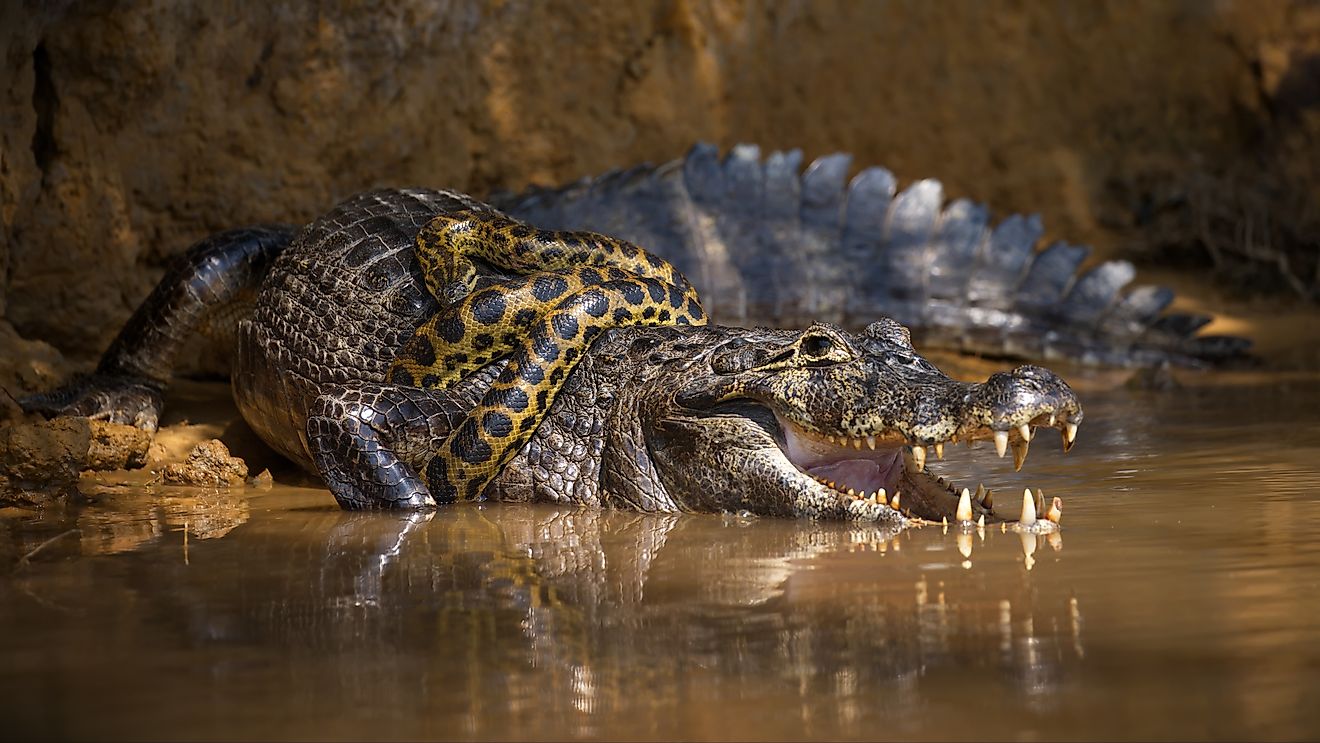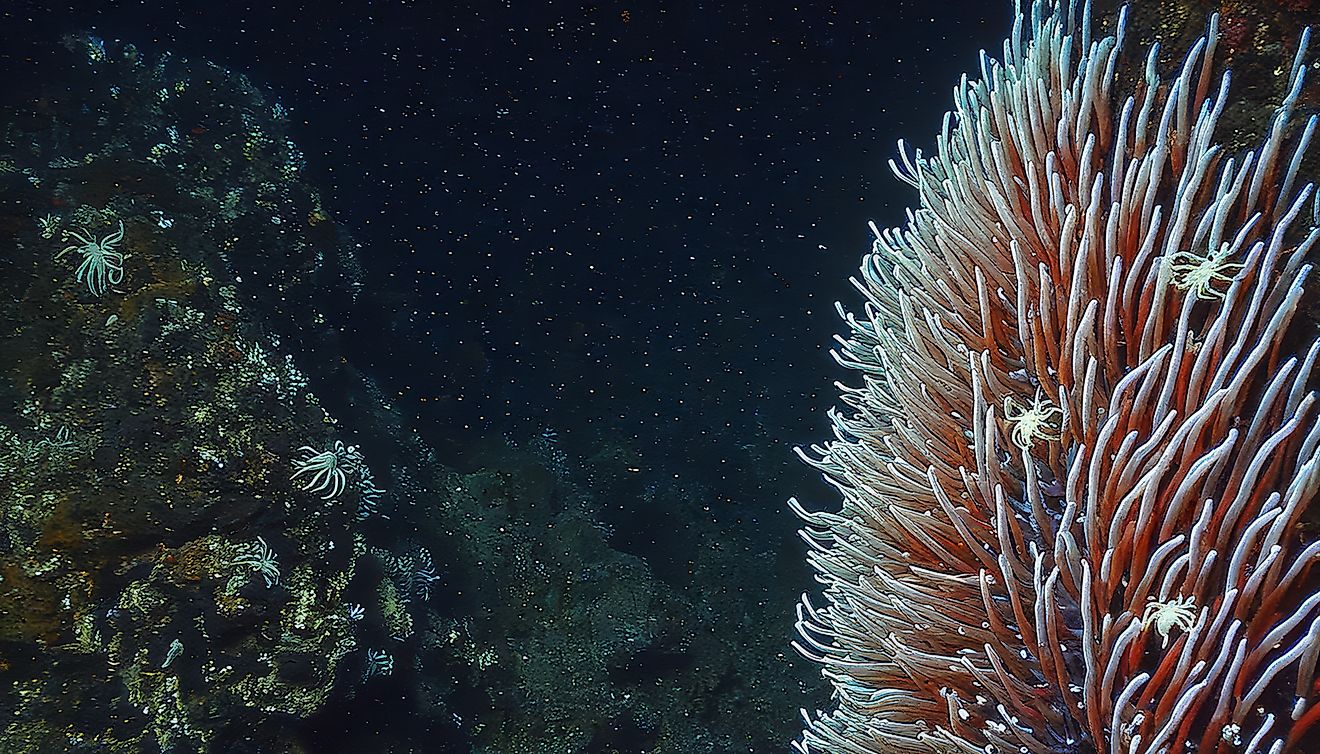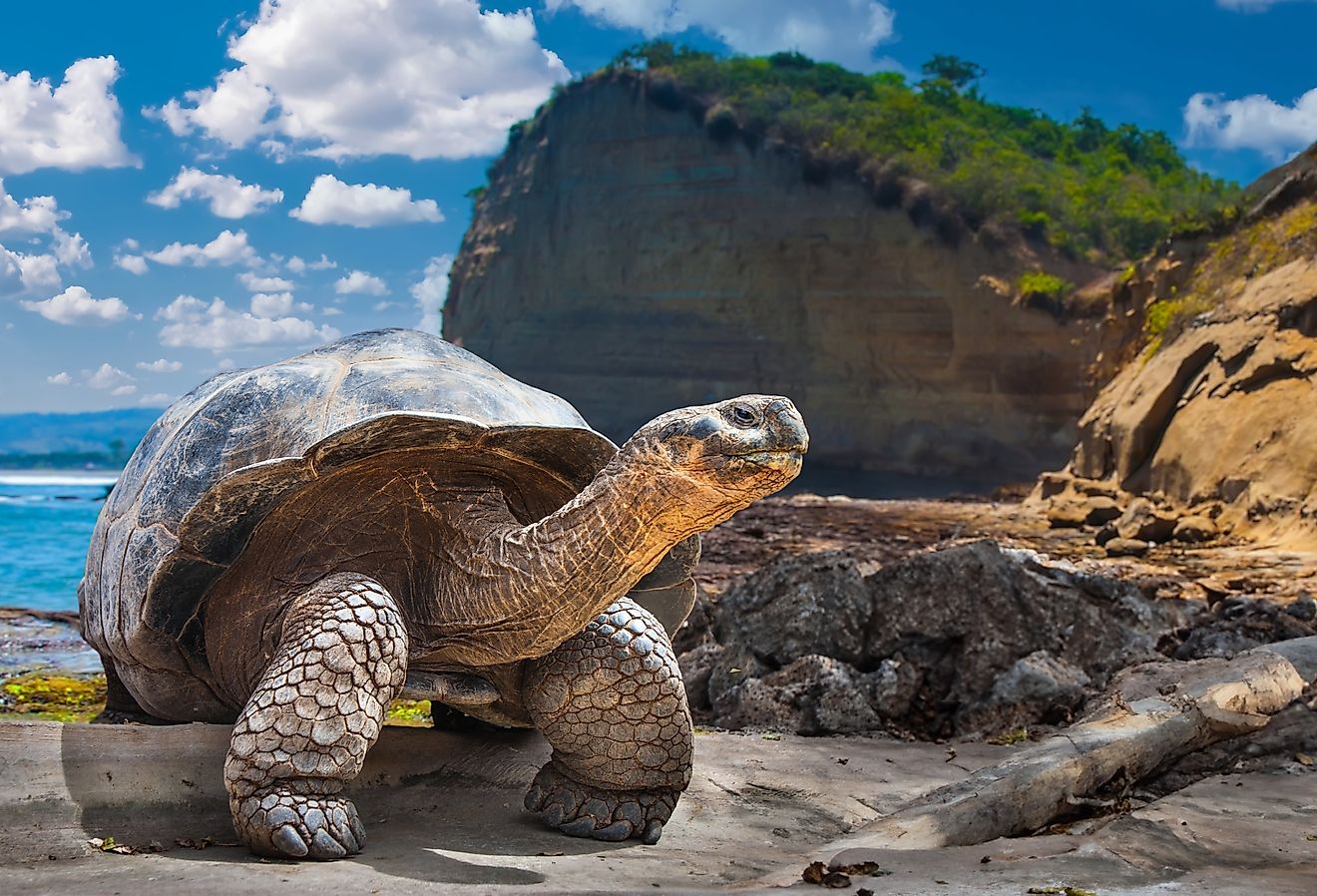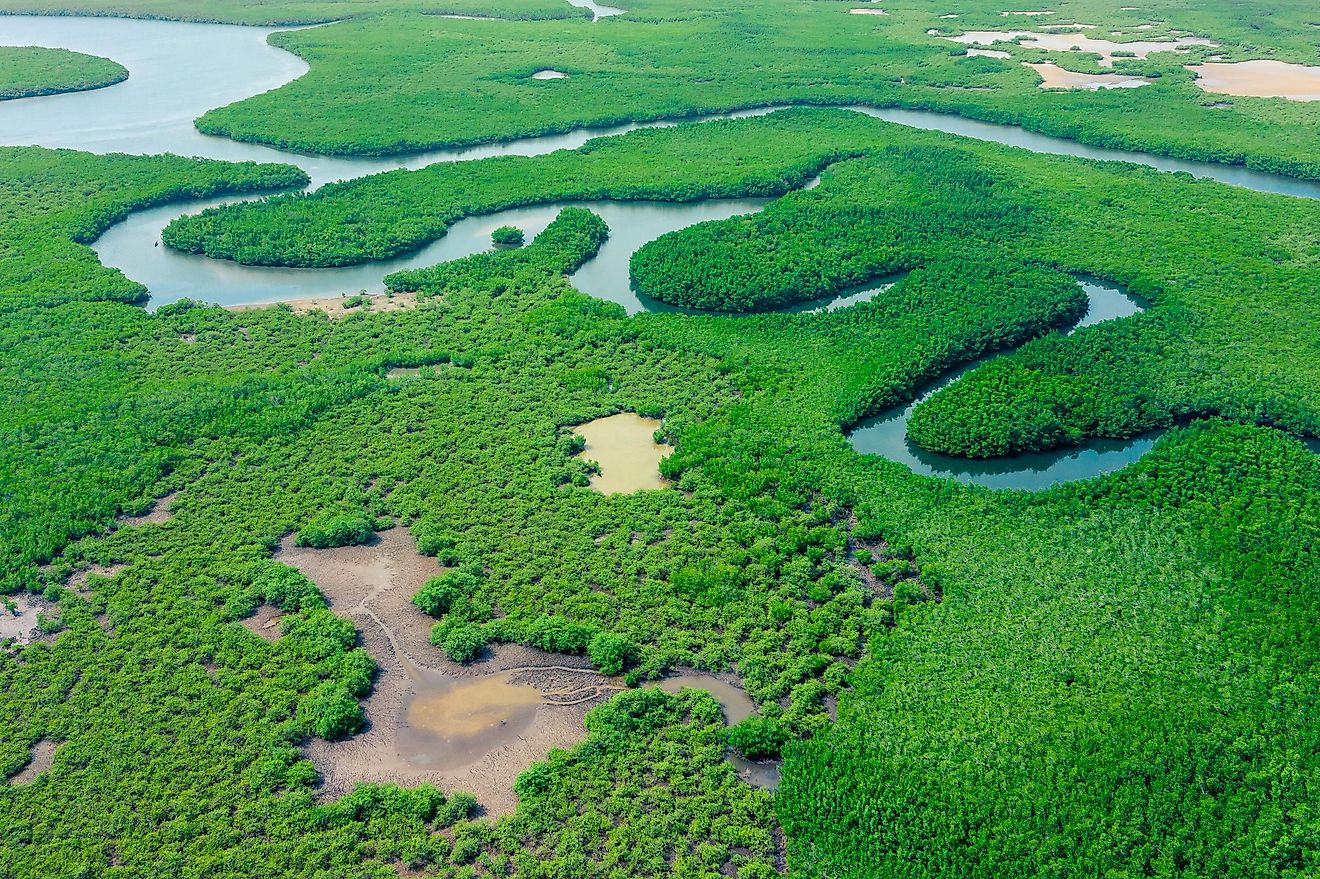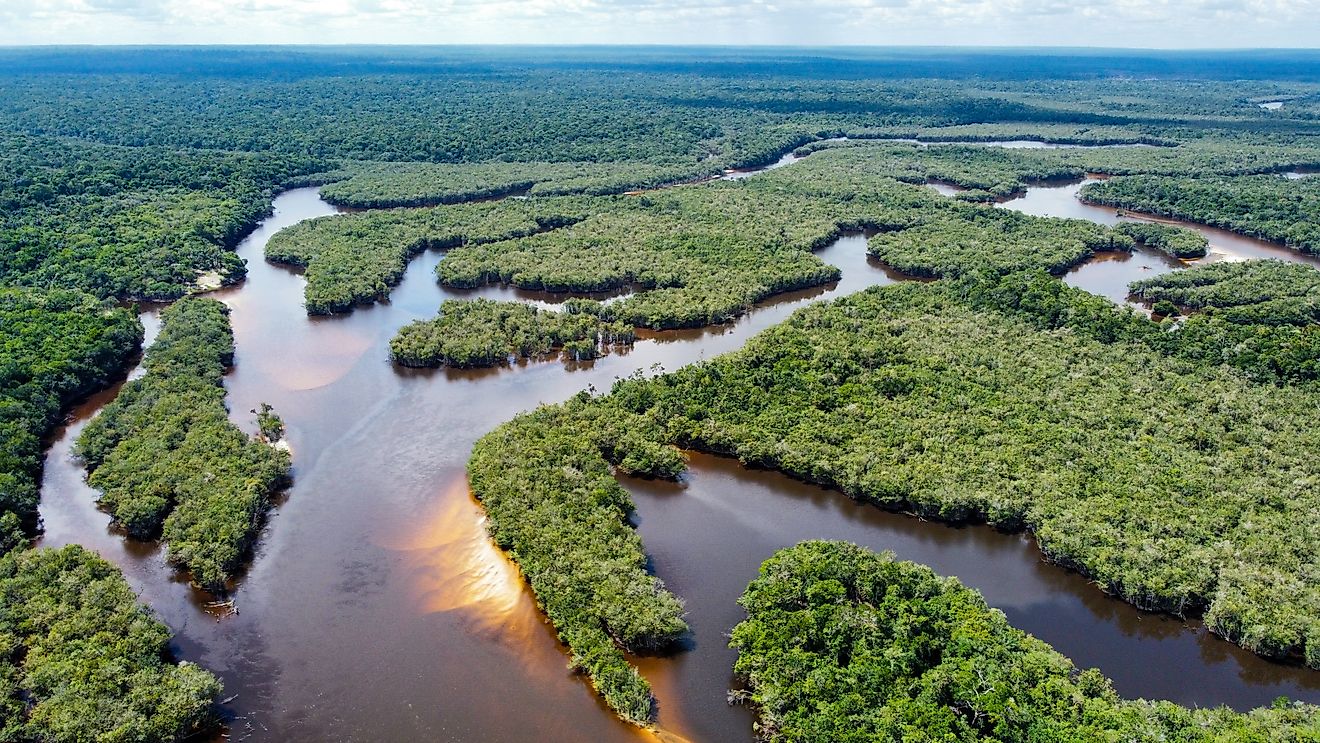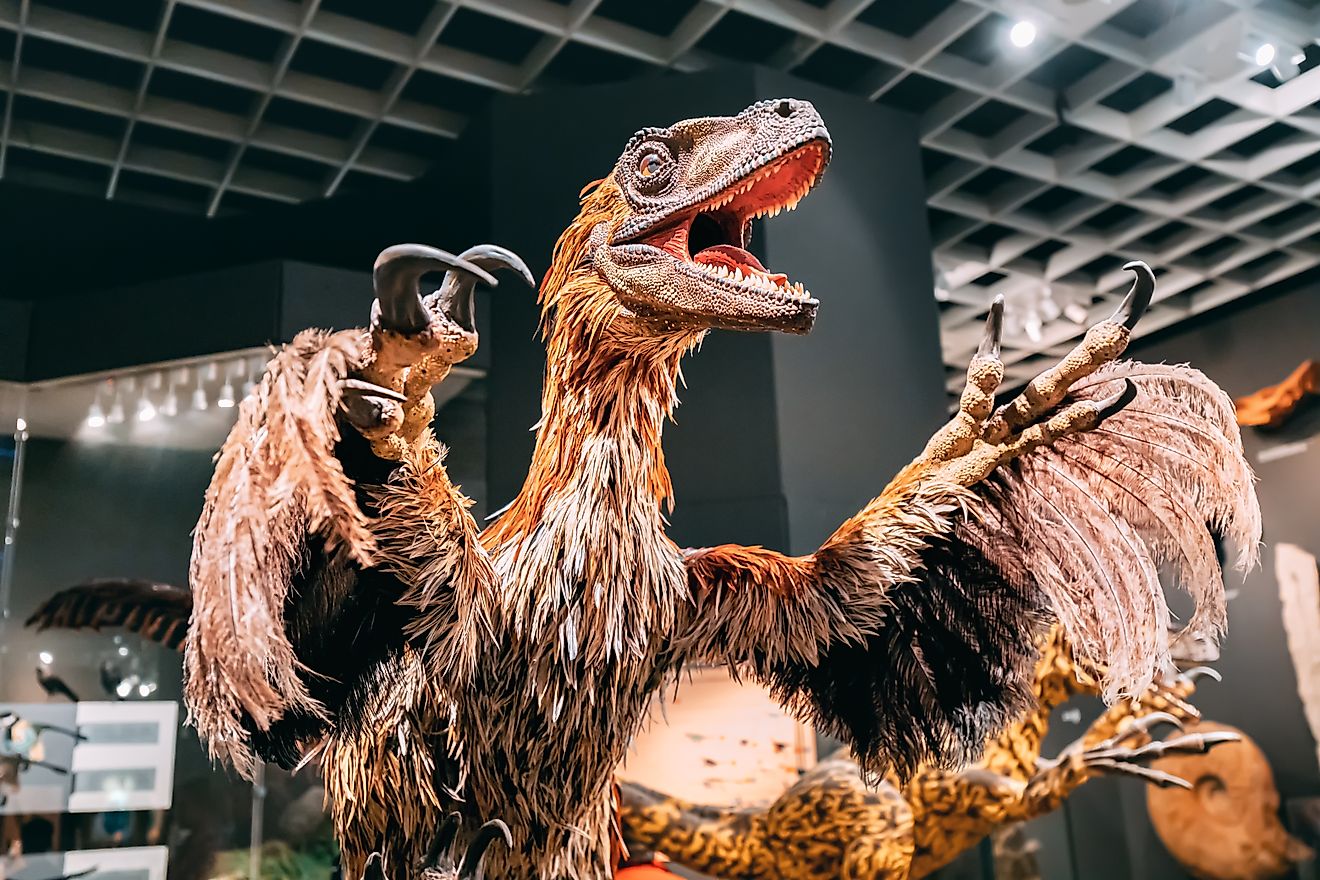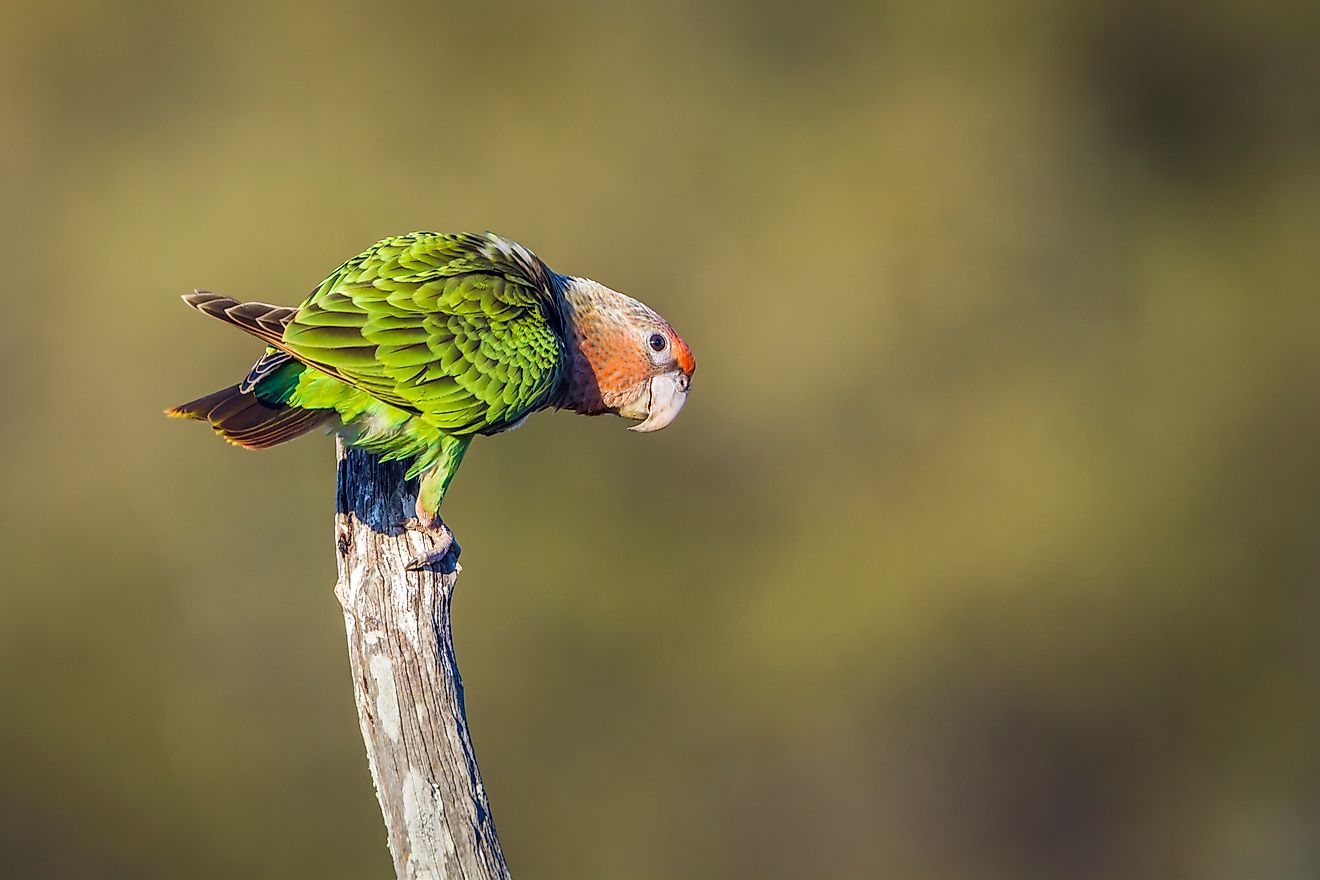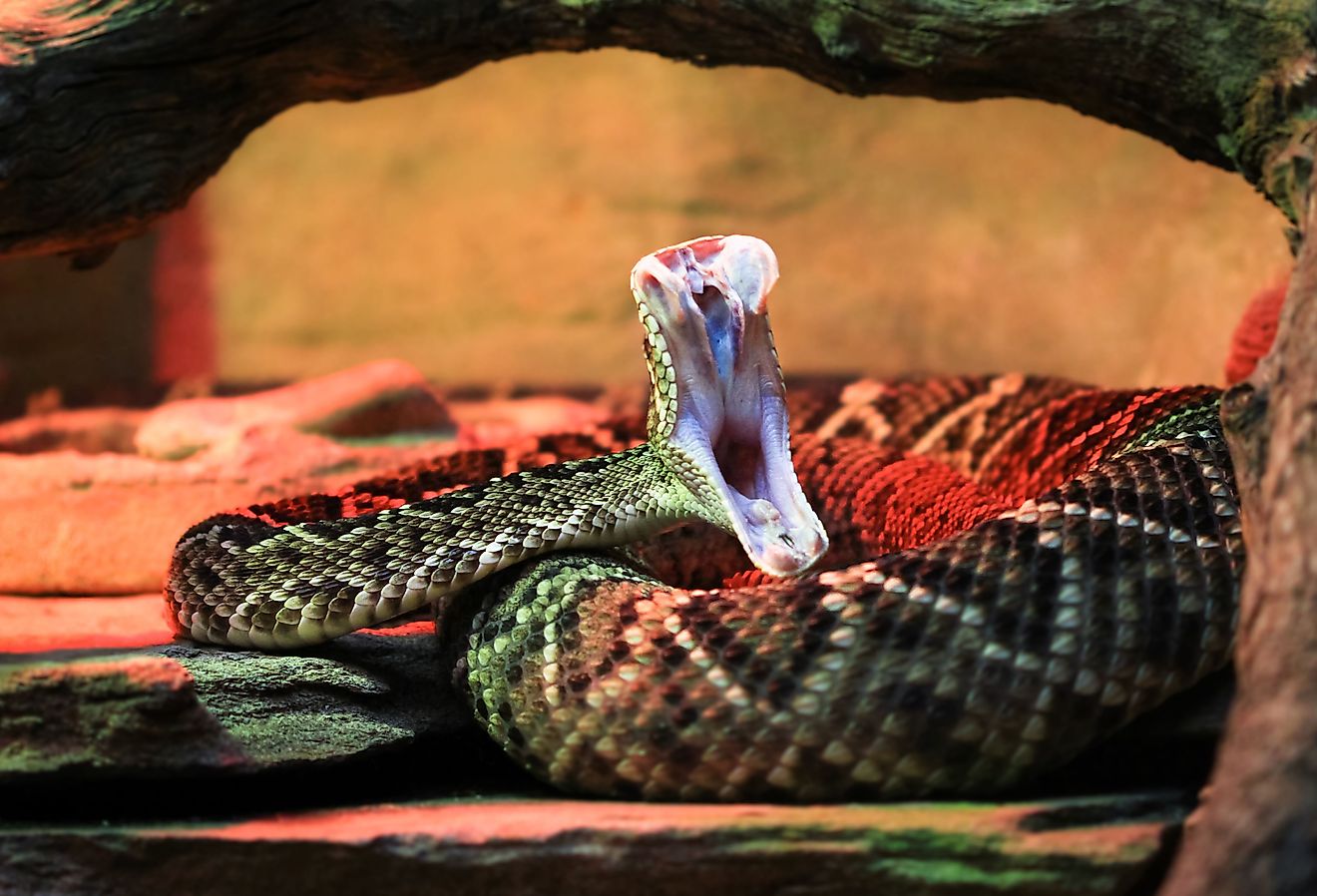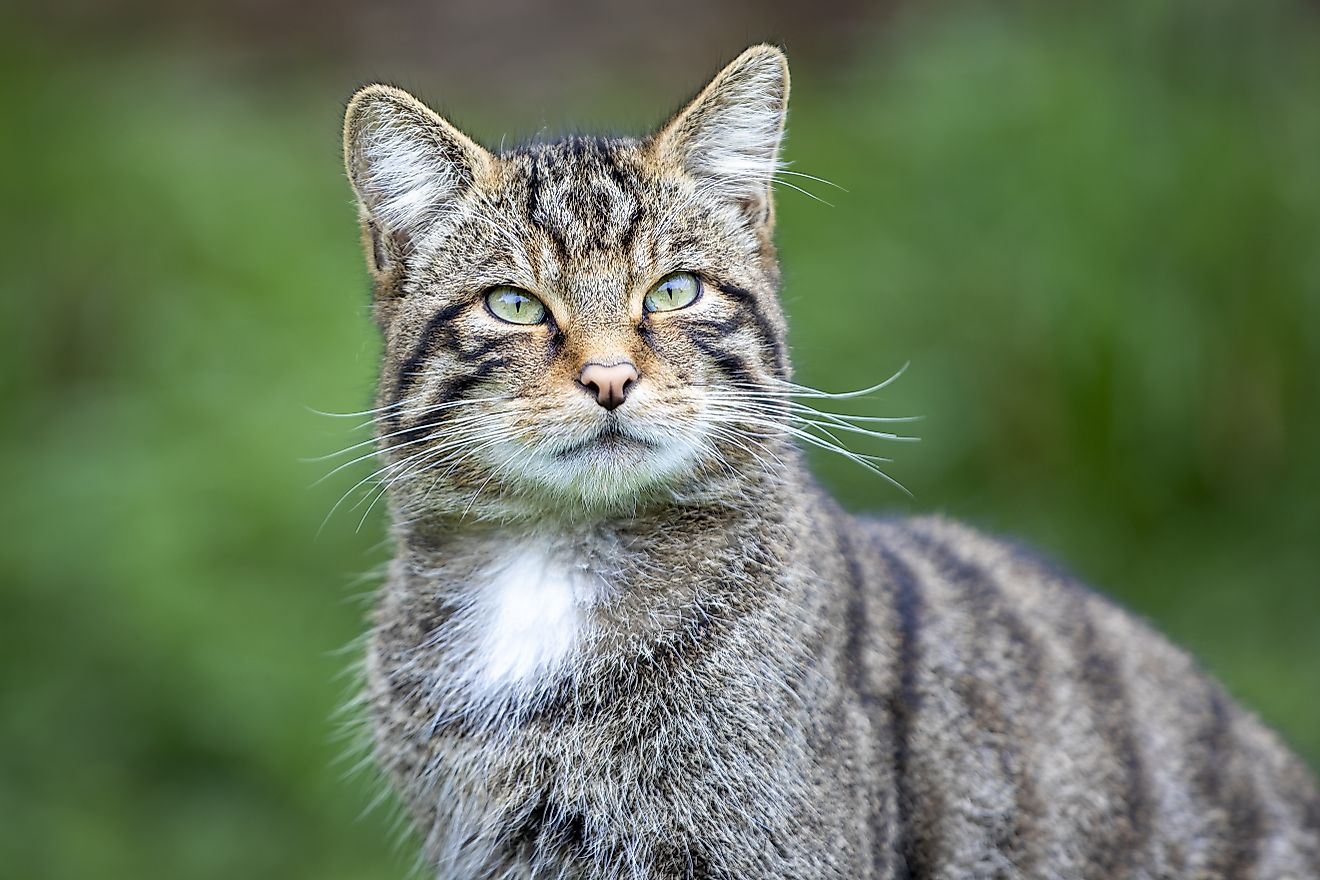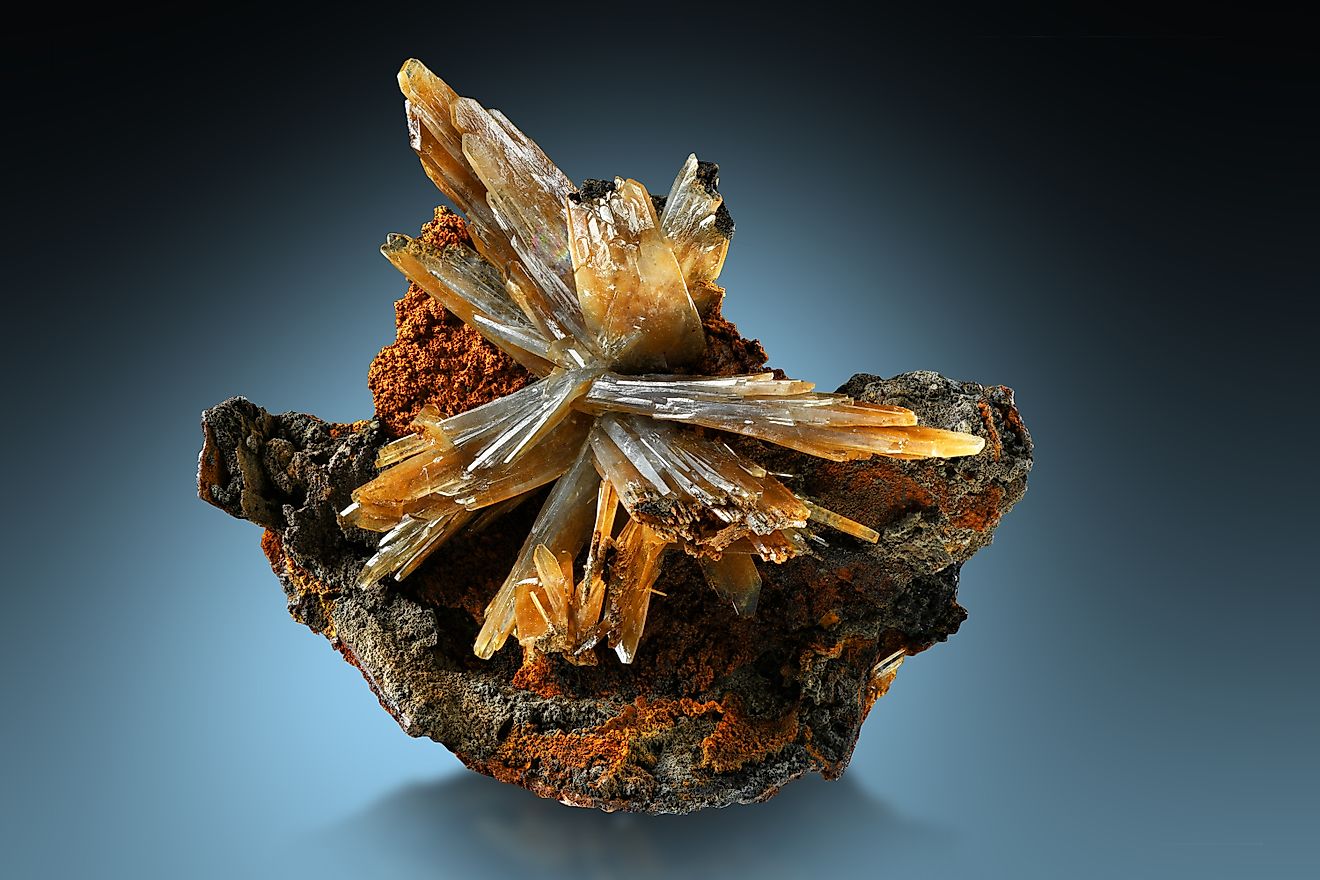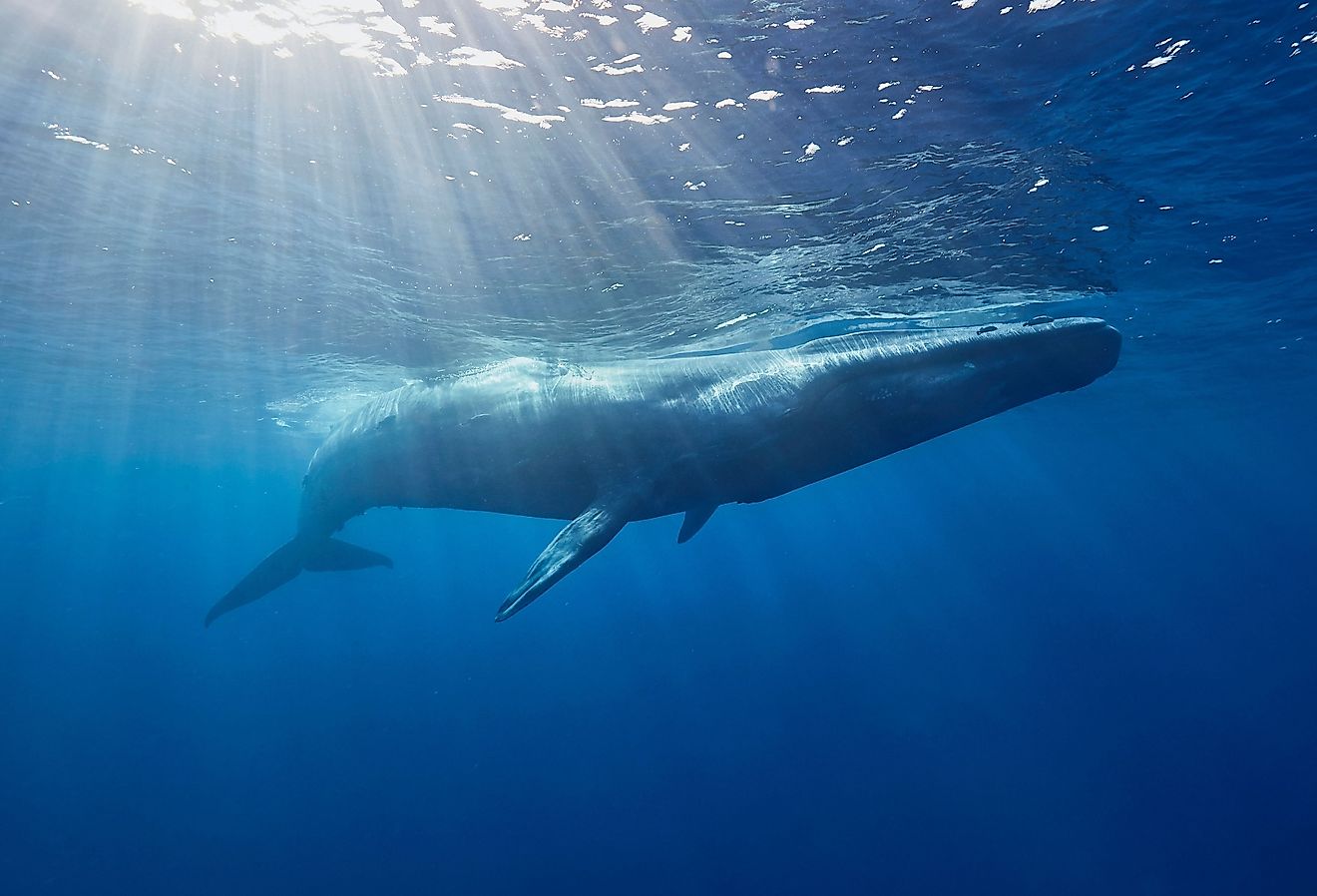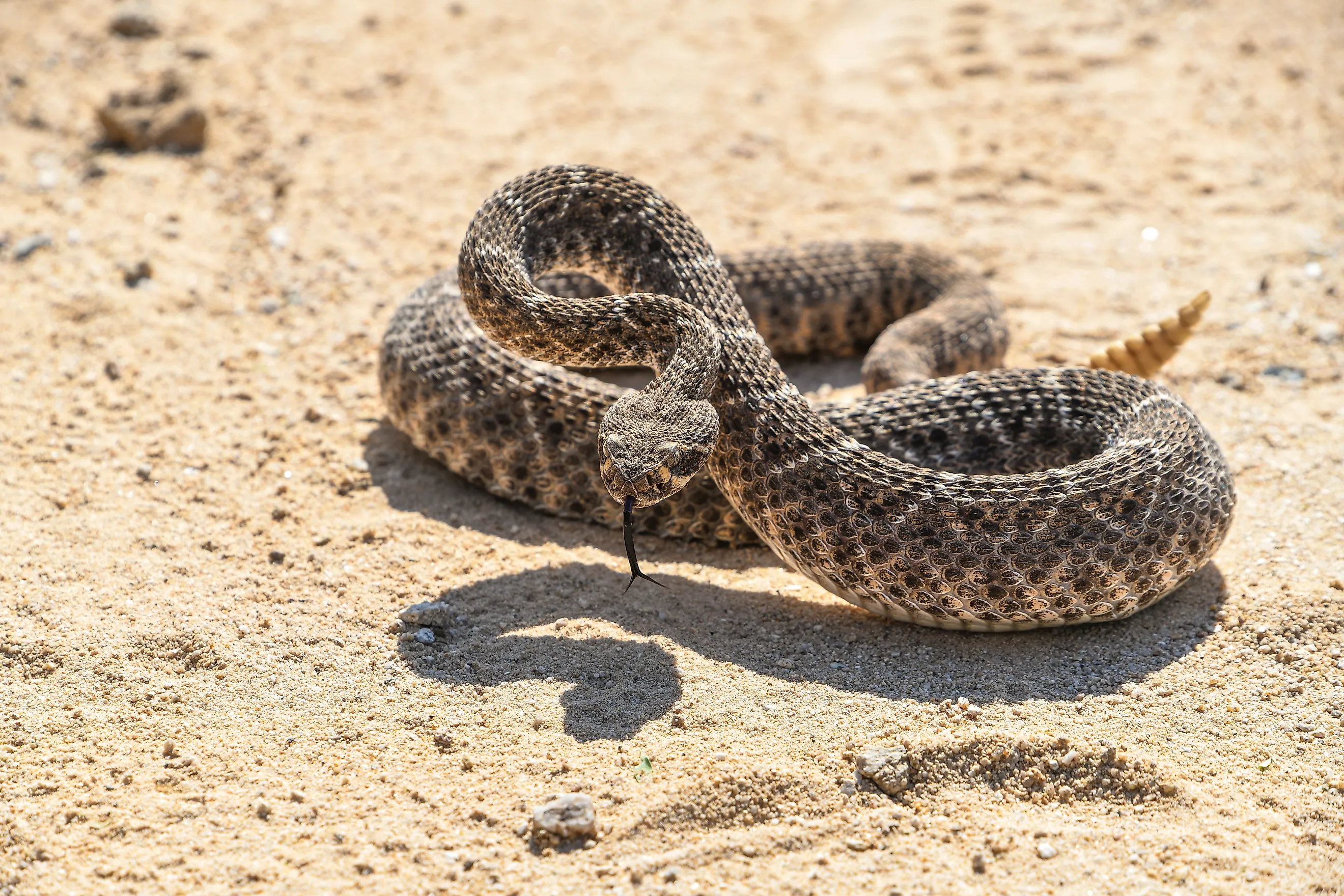
Which State Has More Venomous Snakes: Arkansas or Georgia?
Both are located in the southern region of the United States, and Arkansas and Georgia are some of the most diverse states in the area. From the Appalachian Mountains and Atlantic coastline to the Buffalo National River and Ozarks, unique landscapes abound in these two states. These landscapes are prime habitat for many animal species, such as deer, cottontail, bear, and more. However, with these prominent names that are easy to spot and avoid, snakes also love to hide and hunt in these areas.
While most species, like the northern water snake and milk snake, are harmless, these states are also home to venomous snakes, including the timber rattlesnake and water moccasin. Known to be some of America’s most deadly, identifying and avoiding these snakes is vital when out in the wild. Moreover, it's best to figure out which scenic states have more venomous snakes to prevent an encounter. So, this article delves into the venomous snakes of Arkansas and Georgia so you know what ssslithering species to look out for and where.
Venomous Snakes In Arkansas
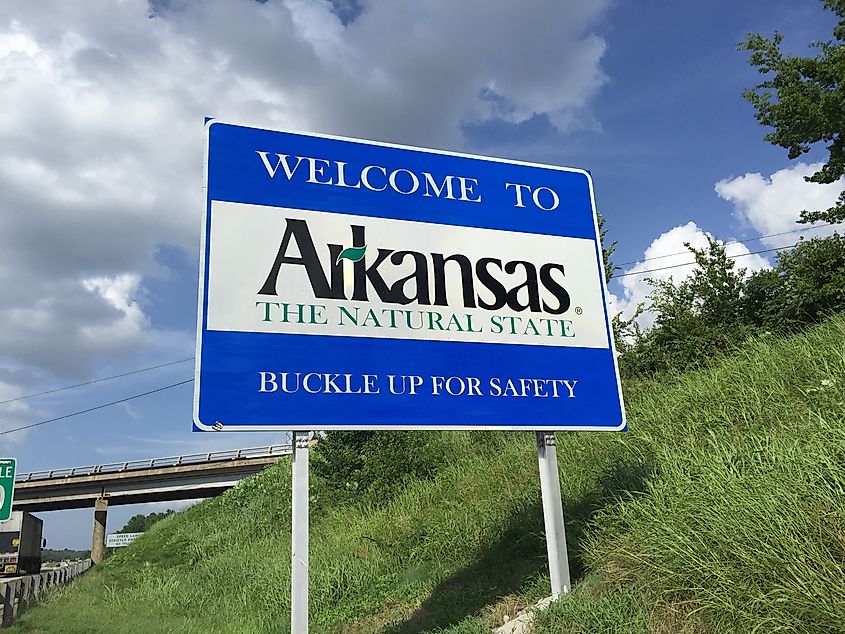
Arkansas sits in the West South Central region of the United States, and unlike Georgia, is a landlocked state. It spans over 53,000 square miles, making it the 29th largest state in the nation. While it may not be large or along the coast, many areas like the Mississippi River, the Interior Highlands, and the Ouachita Mountains are diverse. People from all over come for activities like hiking, wildlife watching, and more, making it essential to identify venomous snake species. As of 2025, there are approximately six venomous snake species native to the state. These are as follows:
Rattlesnakes (Crotalus & Sistrurus)
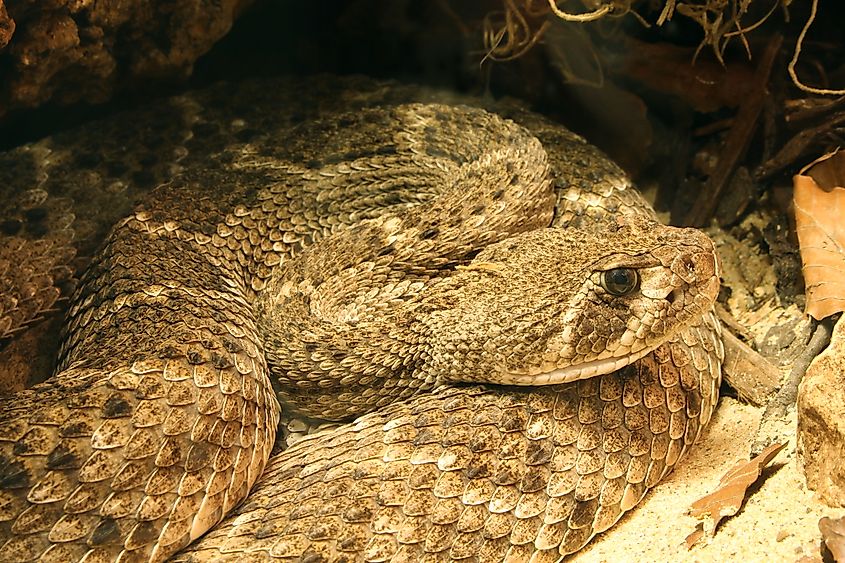
Western Diamondback Rattlesnake, Crotalus atrox, Location: Germany, Ulm, Zoological Garden. photo via Wikicommons
When you think of a venomous snake, the familiar rattling sound of a snake’s tail often comes to mind. This is because of the famous rattlesnakes, a subfamily of pit vipers throughout the nation. These snakes are present in Arkansas and Georgia, but both states are home to different species. While the timber rattlesnake (Crotalus horridus) and pygmy rattlesnake (Sistrurus miliarius) live in both states, the western diamondback (Crotalus atrox) is only found in Arkansas.
The western diamondback rattlesnake is prominent in the southwestern United States and Mexico and is one of the most common species in the nation. It is known by many names, such as the Texan rattlesnake and adobe snake, and it is also one of the most unique. The snake can grow up to 4 feet (120 cm) on average, with some specimens known to grow up to 6 feet (180 cm). It has a khaki ground color with darker blotches dorsally, which eventually merge along the snake's length. Their venom has proteolytic enzymes, which cause tissue damage, swelling, internal bleeding, and can be fatal in rare cases. Apart from the western diamondback, the timber rattlesnake is even more vicious, growing up to 5 feet long (152 cm) and boasting a potent venom. With long fangs and a high venom yield, it is one of the most dangerous rattlesnakes and one you should avoid.
Eastern Copperhead (Agkistrodon contortrix)
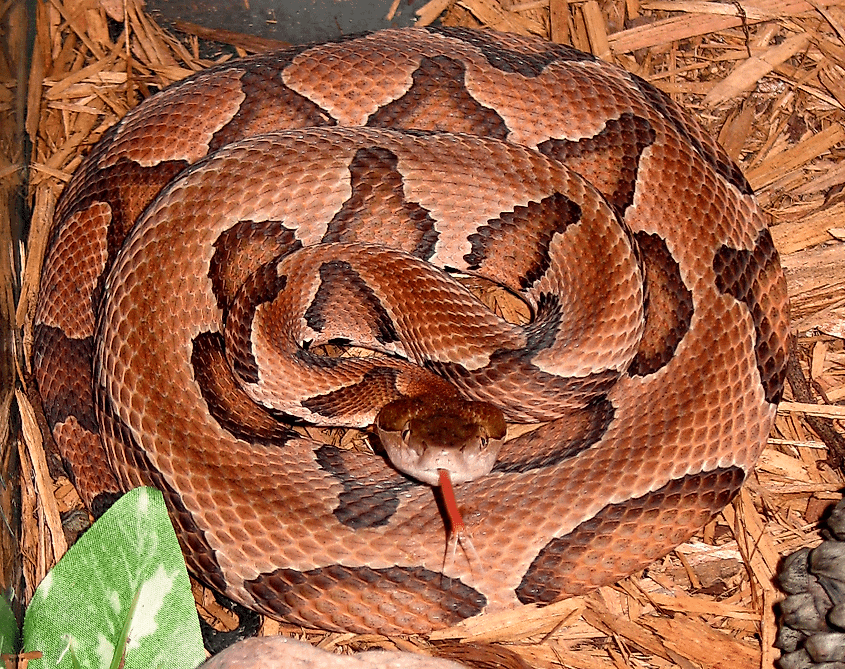
Agkistrodon contortrix contortrix CDC-a. photo via Wikicommons
Similar to the rattlesnakes, the eastern copperhead is a species of pit viper found throughout eastern North America. The snake lives in both Arkansas and Georgia, and is one of the major species in America. It can easily be identified in the wild by its prominent hourglass-shaped darker markings, which stand out on the brown-gray scales. Moreover, they are quite bulky and short, with the average adult reaching 37 inches (95 cm) long at maturity. However, don’t let their size and stockiness fool you, as these snakes are amazing ambush predators and can sneak up on you from all sorts of hiding spots.
Unlike most snakes, which run away, copperheads will freeze, which can often lead to hikers getting too close on accident and being bitten. While bites are rarely fatal, they can cause symptoms such as pain, nausea, swelling, and in some cases, muscle and bone damage. Thus, make sure you watch for the hourglass marking when out in both states, and seek medical attention if bitten.
Cottonmouth (Agkistrodon piscivorus)
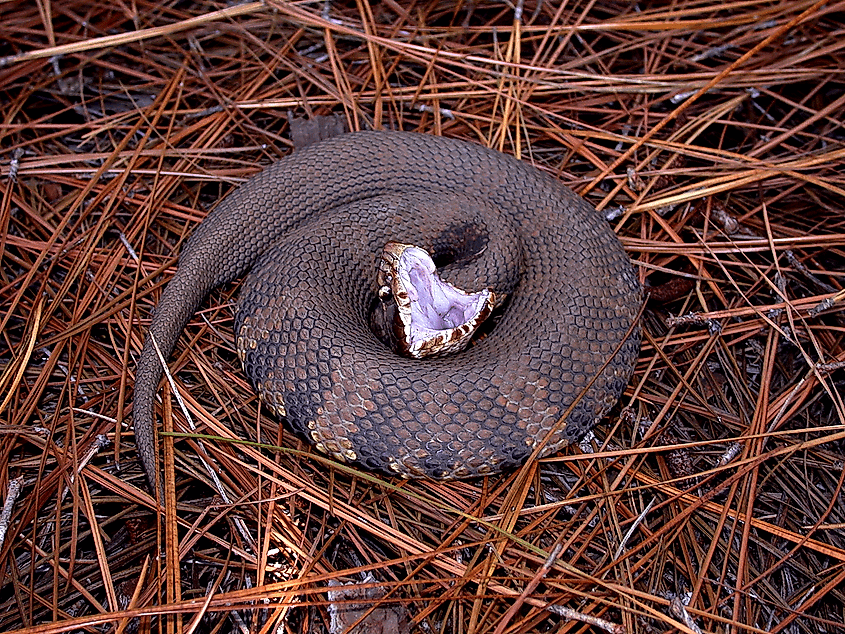
This 2005 photograph depicted an “eastern cottonmouth” snake, Agkistrodon p. piscivorus. photo via Wikicommons
Bodies of water, whether they be rivers or lakes, are among the most popular outdoor spots in both states. To this end, the cottonmouth, also known as the water moccasin, is a venomous species that you might run into when boating or swimming. Present in both Arkansas and Georgia, this snake is among America’s deadliest, with amazing swimming abilities and a potent venom. The snake is known to live near bays and estuaries, using coastal areas as prime ground for hunting and breeding. The average specimen will reach up to 35 inches (90 cm) long, although some have been known to grow longer than 71 inches (180 cm). The snake features a broad head and dark brown or black coloration, except for around a dozen darker crossbands along its body.
While bites are rare, the vast habitat of this snake can lead to chance encounters. If bitten, symptoms include tissue damage and scarring caused by a powerful cytotoxic venom. Thus, urgent medical care is vital to avoid permanent damage and anaphylactic shock.
Texas Coral Snake (Micrurus tener)
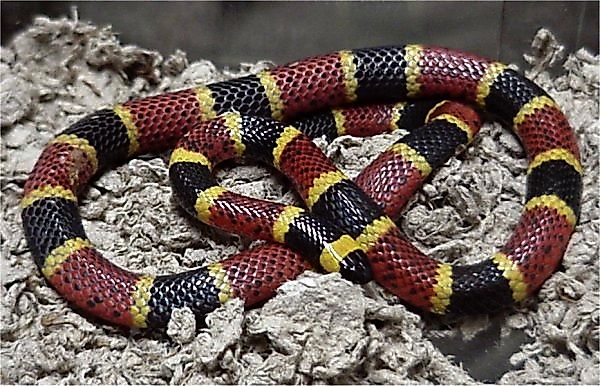
Photographer: LA Dawson Animal courtesy of Austin Reptile Service. photo via Wikicommons
The most vibrant snake in Arkansas, this one is unique to the Natural State and stands out no matter where you are. Found in southwestern parts of the state south of the Little Missouri River, the Texas coral snake is a venomous snake part of the Elapidae family. It boasts a bright tri-color body of black, yellow, and red rings, extending throughout its length. Texas coral snakes can grow up to 48 inches (122 cm) long, making them a medium-long species in the state. Thankfully, unlike water moccasins and copperheads, these snakes are timid and tend to hunt during the night. However, if you do get bitten, their venom is neurotoxic and myotoxic, leading to paralysis and myolysis. Thus, immediate first aid is advised.
Venomous Snakes In Georgia

Georgia is located east of Arkansas along the Atlantic Ocean’s American coastline. The state is nicknamed the Peach State for its abundant peach production and has tons of outdoor land to explore. From the mountains to the coast, venomous snakes can be found throughout the state, often leading to unwanted encounters. Specifically, people can usually run into snakes during activities like hiking Cloudland Canyon State Park or boating along the Tallulah Gorge. That said, many species overlap with Arkansas, such as the pygmy rattlesnake, cottonmouth, and copperhead. Apart from these, Georgia has two species of venomous snakes that cannot be found in Arkansas.
Eastern Coral Snake (Micrurus fulvius)
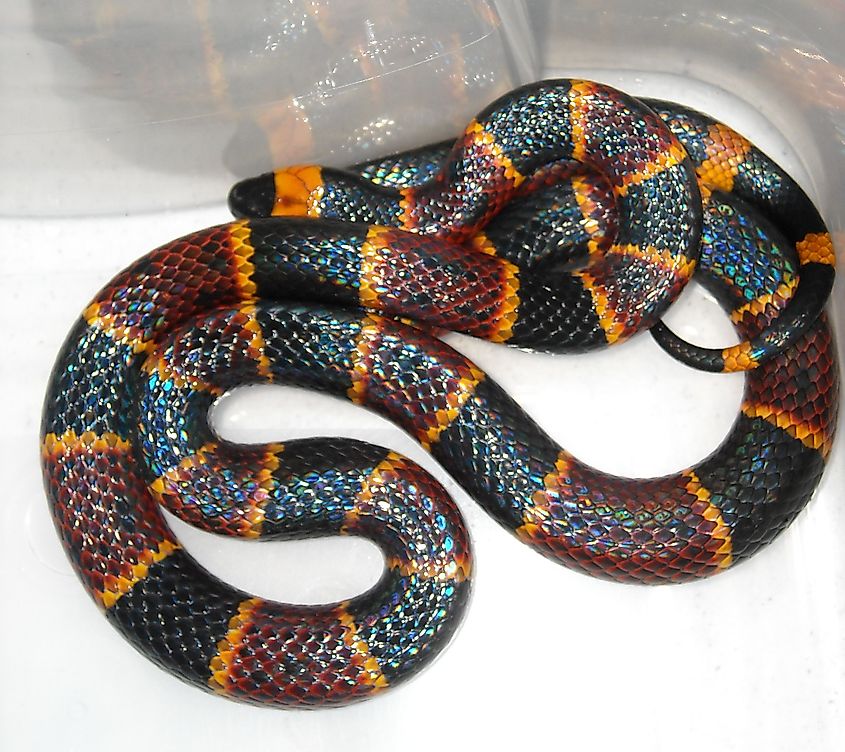
Micrurus fulvius, Eastern Coral Snake, Jacksonville, FL photo via Wikicommons
Georgia is home to the eastern coral snake, a relative of the Texas coral snake. Endemic to the southeastern United States and found throughout pine flatwoods and hardwood forests in Georgia, this snake is just as vibrant as its cousin. It also sports a set of black, red, and yellow rings, although the yellow rings are much narrower than the rest. These rings run along the snake's entire body, which is around 31 inches (80 cm) long at adulthood.
Thanks to its coloration, most people spot these snakes from afar, so you are unlikely to get close on accident. Moreover, eastern coral snakes like to spend most of their time underground, making chance encounters rare. That said, they stay up during rainfall, making it harder to spot them near debris. If bitten by an eastern coral snake, symptoms like pain, slurred speech, weakness, and paralysis are common due to its neurotoxin. Thankfully, fatalities are rare, and quick medical attention should reduce harm.
Eastern Diamondback Rattlesnake (Crotalus adamanteus)
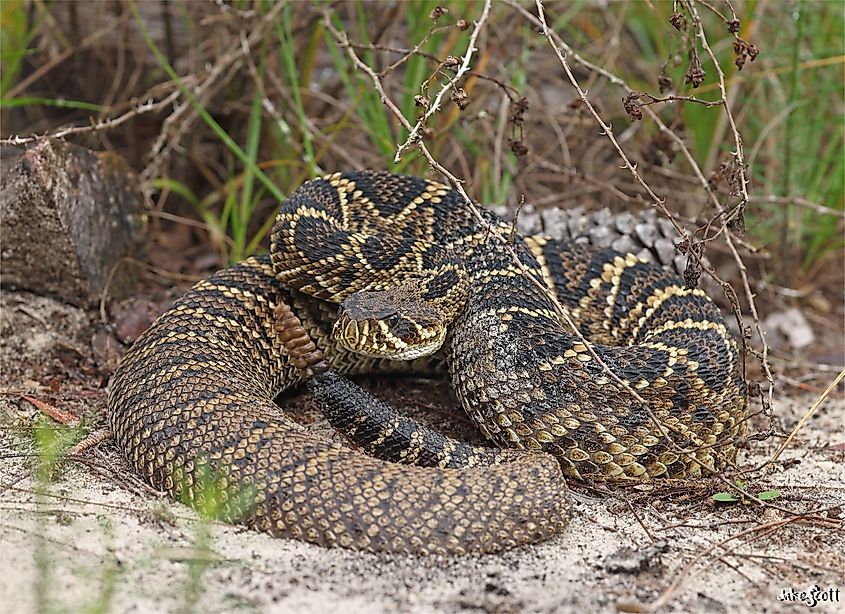
Eastern Diamondback Rattlesnake (Crotalus adamanteus) from North-Central Florida.
While most rattlesnake species are common between Arkansas and Georgia, the eastern diamondback is found in Georgia. Mainly found in the state’s Coastal Plain region, this is the largest rattlesnake species and one of the heaviest. Specimens can reach up to 8 feet (2.4 meters) long and weigh over 34 pounds (15.4 kg), making them a massive animal. That said, the average size is much less, and you probably won’t stumble onto an 8-foot giant in the wild. The snake has a brownish coloration with darker diamond-shaped blotches, which give it the name diamondback.
Eastern diamondbacks are generally shy and avoid confrontation despite their intimidating size and power. They are most active during the day in spring and fall, but during the summer, they may become more nocturnal. Their venom contains a powerful hemotoxin that can lead to severe pain, swelling, tissue damage, and potentially fatal complications if not treated quickly. Because of their size, they also deliver a large venom dose in each bite, making immediate medical attention crucial. That said, sightings are uncommon, especially in well-trafficked areas.
Whether in Arkansas or Georgia, the best thing to do when encountering a snake is to give it space and observe from a distance. Never attempt to touch, provoke, or kill the snake, as this is when most bites occur. Stick to marked trails when hiking, wear boots and long pants in grassy or wooded areas, and keep an eye out when lifting logs or stepping over rocks. If you suspect you have been bitten by a venomous snake, stay calm and still to slow venom circulation, remove any tight jewelry or clothing near the bite area, and seek emergency medical care immediately. Do not apply a tourniquet or try to suck out the venom, as these outdated methods can do more harm than good.
Georgia has slightly more venomous snake species than Arkansas when comparing the two states. With its varied terrain and proximity to coastal ecosystems, Georgia offers a wider range of habitats for venomous snakes. However, the difference is not huge, and both states require caution when exploring their diverse and beautiful landscapes. Ultimately, being aware of your surroundings and learning to identify local snake species is the best way to stay safe in either state.
